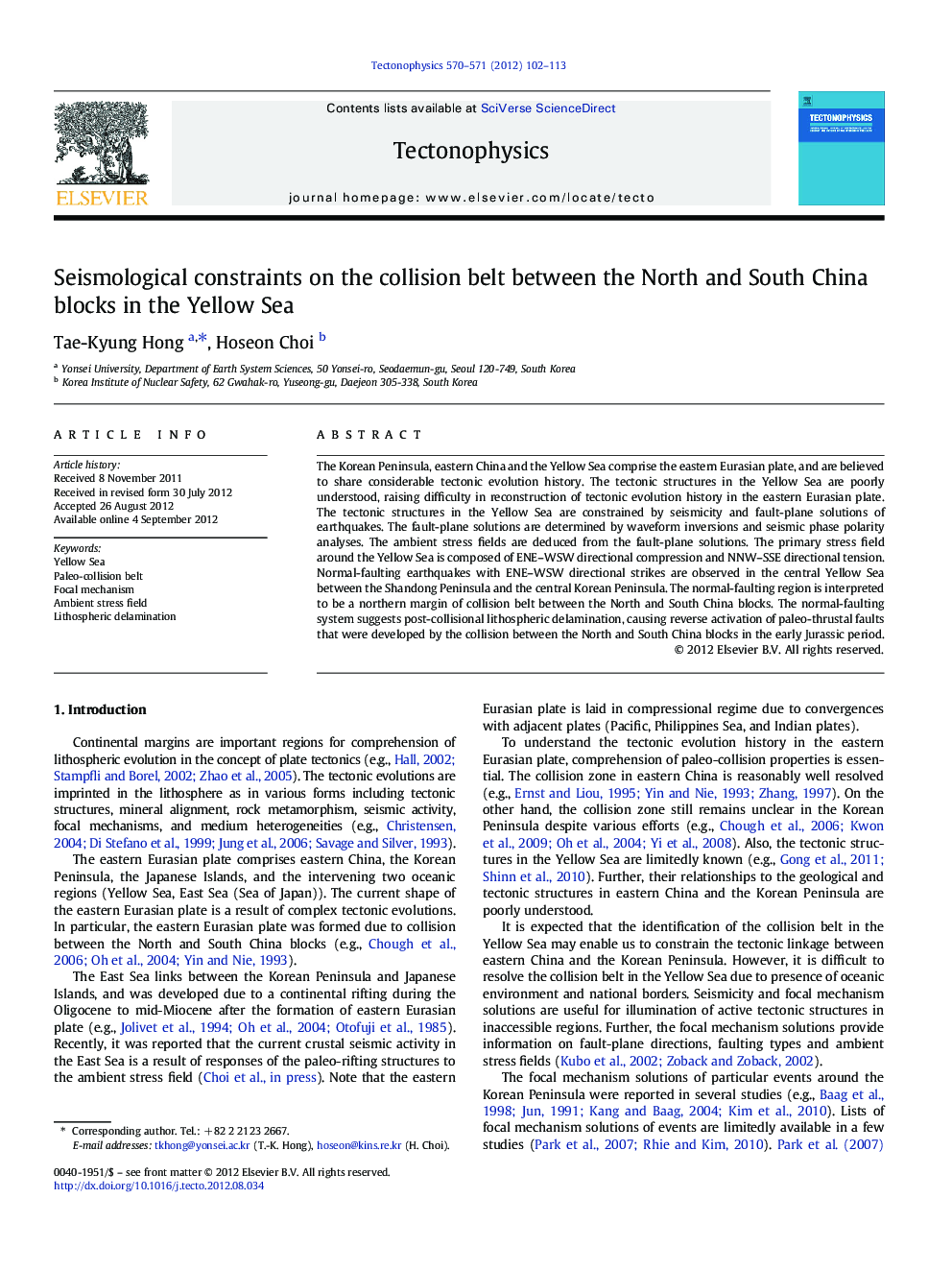| Article ID | Journal | Published Year | Pages | File Type |
|---|---|---|---|---|
| 6434207 | Tectonophysics | 2012 | 12 Pages |
The Korean Peninsula, eastern China and the Yellow Sea comprise the eastern Eurasian plate, and are believed to share considerable tectonic evolution history. The tectonic structures in the Yellow Sea are poorly understood, raising difficulty in reconstruction of tectonic evolution history in the eastern Eurasian plate. The tectonic structures in the Yellow Sea are constrained by seismicity and fault-plane solutions of earthquakes. The fault-plane solutions are determined by waveform inversions and seismic phase polarity analyses. The ambient stress fields are deduced from the fault-plane solutions. The primary stress field around the Yellow Sea is composed of ENE-WSW directional compression and NNW-SSE directional tension. Normal-faulting earthquakes with ENE-WSW directional strikes are observed in the central Yellow Sea between the Shandong Peninsula and the central Korean Peninsula. The normal-faulting region is interpreted to be a northern margin of collision belt between the North and South China blocks. The normal-faulting system suggests post-collisional lithospheric delamination, causing reverse activation of paleo-thrustal faults that were developed by the collision between the North and South China blocks in the early Jurassic period.
⺠Paleo-collision belt between North and South China blocks in the Yellow Sea. ⺠Post-collisional lithospheric delamination on the collision margin. ⺠Linkage of collision belt between eastern China and the central Korean Peninsula. ⺠Investigation of relationships among seismicity, focal mechanism solutions, ambient stress fields, and crustal structures.
